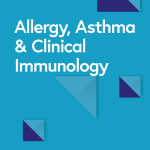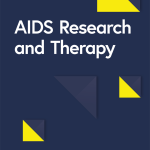Screening results of asenapine adverse reactions
From the first quarter of 2009 to the third quarter of 2023, this study collected a total of 17,607,392 adverse event reports from the FAERS database. After removing 2,637,523 duplicate reports, we obtained 6703 reports which included 15,439 adverse reactions deemed as primary suspects. We performed demographic and clinical characteristic analysis on the 6703 reports and conducted disproportionality analysis on the 15,439 adverse reactions. Detailed information is shown in Fig. 1.
Basic characteristics of asenapine-related ADEs
In the basic characteristics of adverse event reports involving Asenapine, we observed a trend of initial increase followed by a decrease in the number of reports from 2009 to 2023. The highest number of reports was in 2010 (25.65%), followed by 2013 (22.48%). The lowest number was in 2009 (0.33%), followed by 2015 and 2023, both at (1.24%), as detailed in Fig. 2. In terms of gender, the number of reports involving females was significantly higher than that of males (51.98% vs. 27.79%). Regarding age, more than half of the data (55.56%) did not provide age information, limiting the potential for our study on the relationship between age and adverse reactions. Nevertheless, among the reports with specific age data, the age group of 18 to 45 years was the most common (23.48%), followed by the age group of 45 to 65 years (15.69%). The majority of Asenapine adverse reaction reports were from physician (43.47%), followed by consumers (34.27%). Excluding the “other” category (54.15%), the primary reporting country was the United States (37.27%). In terms of the route of administration, more than half were sublingual (54.57%). Regarding clinical outcomes, apart from other serious, the most common outcome was hospitalization (29.48%), followed by death (7.97%). Concerning the time from drug administration to the appearance of adverse reactions, about half of the reports did not specify this duration (51.23%). Approximately one-third of the adverse reactions were reported to occur within less than 7 days of drug administration (31.51%), with the remainder occurring between 7 and 27 days and ≥ 60 days (6.67%). For indications, the drug was primarily used for the treatment of bipolar disorder (30.55%). Detailed information is provided in Table 1.
Asenapine signal mining
In this study, the analysis of adverse event reports related to Asenapine revealed associations with 24 System Organ Classes (SOCs). The research indicates that the three most common systems affected are various nervous system disorders (n = 3305, ROR 2.94, PRR 2.51, IC 2.33, EBGM 2.51), mental disorders (n = 2641, ROR 3.42, PRR 2.99, IC 1.58, EBGM 2.99), and gastrointestinal system disorders (n = 2049, ROR 1.63, PRR 1.54, IC 0.62, EBGM 1.54), consistent with Asenapine’s characteristics as a psychiatric drug. Details are outlined in Table 2.
At the Preferred Term (PT) level, four algorithms were employed to analyze drug adverse reactions and assess their compliance with various screening criteria, resulting in 204 PTs. According to the ROR algorithm ranking, the top 30 PTs are shown in Table 3. The results indicate high signal strength for PTs, such as in gastrointestinal system disorders, where the adverse reaction primarily manifested as reduced oral sensation (n = 354, ROR 64.64, PRR 92.43, IC 6.4, EBGM 89.4). In the nervous system, the predominant adverse reactions were akathisia (n = 238, ROR 65.77, PRR 64.74, IC 5.98, EBGM 63.24), followed by sedation (n = 217, ROR 35.78, PRR 35.28, IC 5.12, EBGM 34.84). Adverse reactions in mental disorders were mainly characterized by distractibility (n = 9, ROR 30.35, PRR 30.33, IC 4.91, EBGM 30.01). Details are provided in Table 3.
As Asenapine is a psychiatric drug, we explored its effects on the neuro-psychiatric system. In mental disorders, we identified 30 PTs meeting the criteria, and in nervous system disorders, we obtained 20 PTs meeting the criteria. Adverse reaction reports in mental disorders included mania (n = 106, ROR 9.92, PRR 9.77, IC 3.28, EBGM 9.68) and agitation (n = 100, ROR 4, PRR 3.95, IC 1.98, EBGM 3.94). In nervous system disorders, the main adverse reaction reported was taste perversion (n = 345, ROR 6.77, PRR 6.43, IC 2.68, EBGM 6.4) in Table 4.







Add Comment